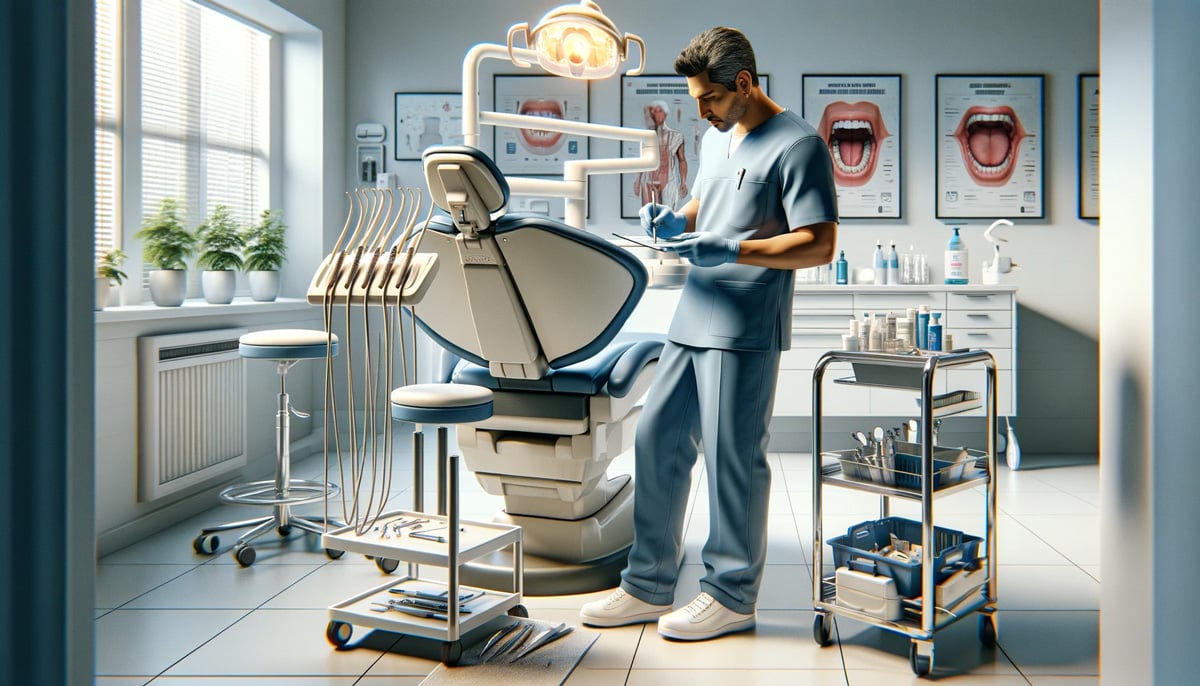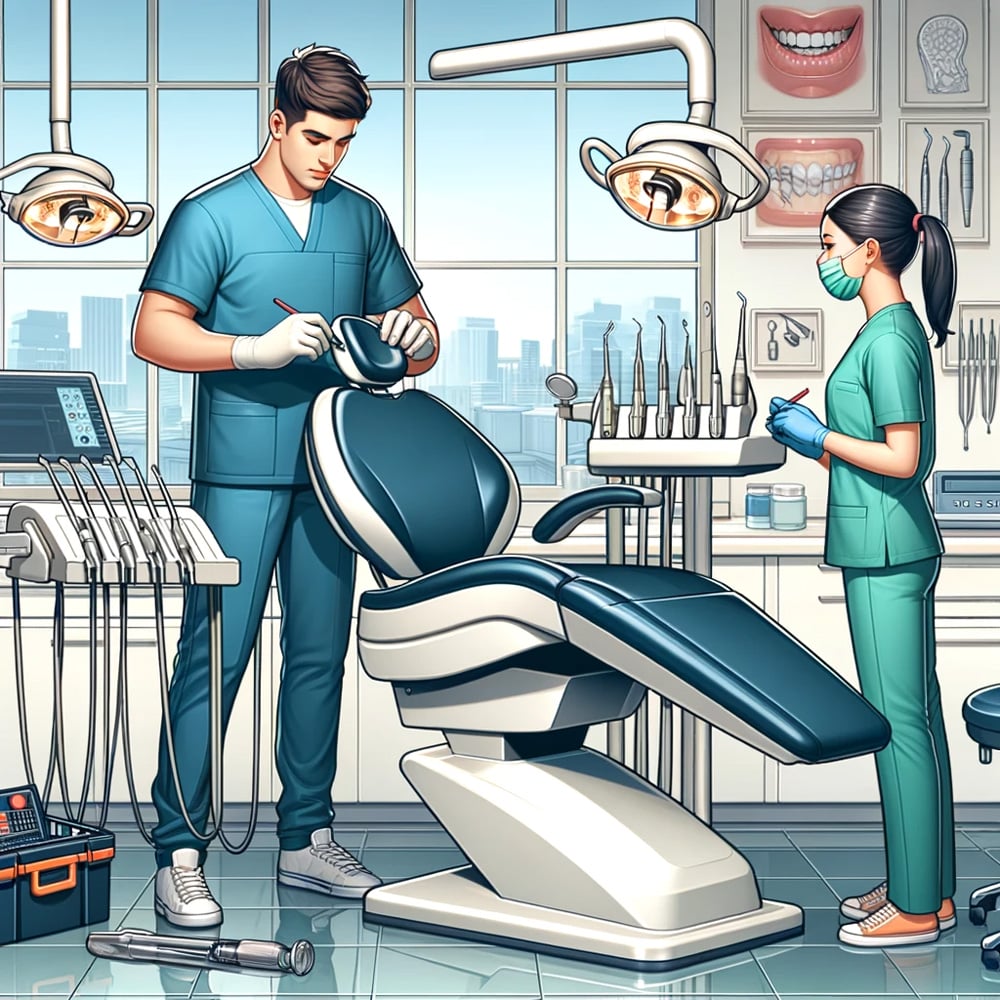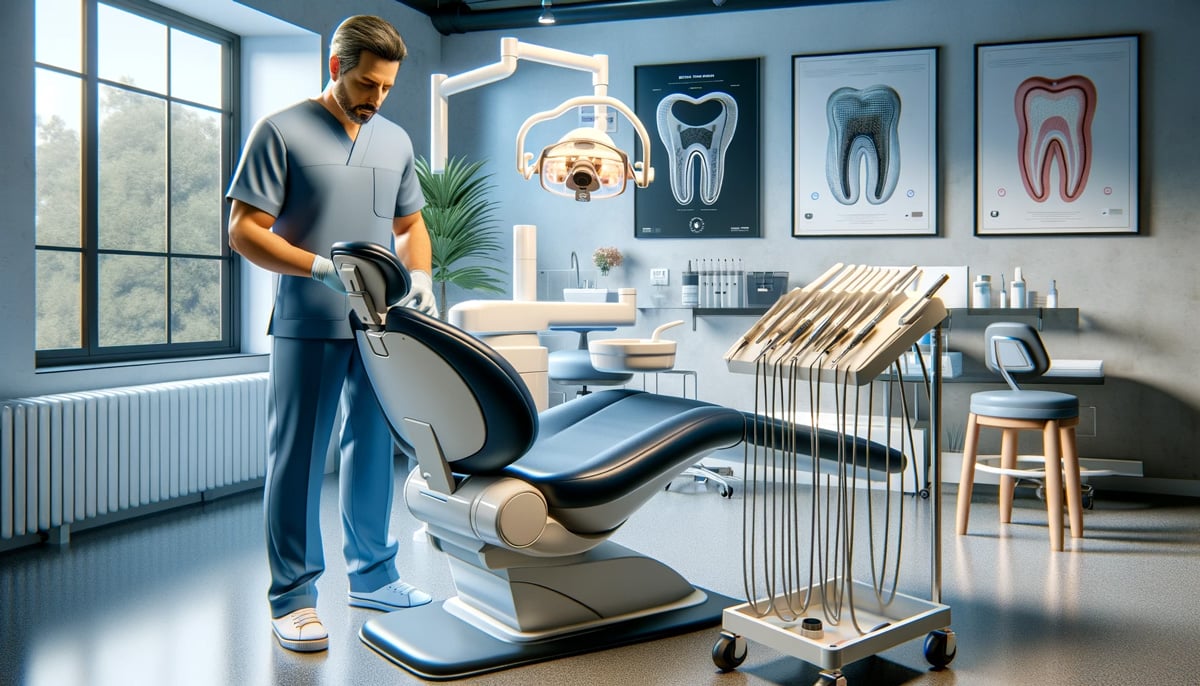As a seasoned dental professional, I have seen firsthand the critical role that a well-maintained dental chair plays in a successful practice.
Holding a Bachelor of Dental Surgery and a Master’s in Dental Surgery with a specialization in Orthodontics, my journey has endowed me with extensive insights into dental ergonomics and chair design.
In this article, I aim to share essential tips and tricks for maintaining your dental chair, ensuring its longevity and efficiency.
Understanding the Importance of Dental Chair Maintenance

Why Your Dental Chair Deserves Attention
A dental chair is not just a piece of equipment; it’s the centerpiece of a dental practice, integral to both patient comfort and clinical efficiency.
A well-maintained chair not only ensures patient trust but also enhances the dentist’s ability to provide effective care.
Neglecting its maintenance can lead to discomfort, safety issues, and a tarnished professional image.
The longevity of a dental chair relies heavily on regular maintenance.
It’s a significant investment, and like any sophisticated machinery, it requires care to function optimally.
This aspect of dental practice management is often overlooked, yet it is crucial for seamless operations and patient satisfaction.
Keeping it Clean: Simple yet Effective
The first step in maintaining your dental chair is regular cleaning.
Daily routines should include wiping down the chair with suitable cleaning agents that are effective yet gentle on the materials.
Avoid harsh chemicals that can damage upholstery or mechanical components.
Pay special attention to areas that come into frequent contact with patients, such as the headrest and armrests, to maintain hygiene and prevent the spread of infections.
A study published in the Journal of Clinical Dentistry highlighted the significance of using appropriate cleaning agents to extend the life of dental chair materials while ensuring effective infection control.
This balance is key to maintaining both the functionality and appearance of your chair.
Technical Tune-Up: Beyond the Surface

Beyond surface cleaning, technical maintenance is vital.
This includes checking and lubricating mechanical parts, ensuring electrical components are functioning correctly, and keeping software up-to-date if your chair includes digital features.
Regular check-ups by a qualified technician can prevent small issues from becoming major problems.
For instance, a report in the Dental Equipment and Materials journal emphasized the importance of periodic maintenance checks for hydraulic and electrical systems in dental chairs.
These checks not only ensure operational efficiency but also patient and practitioner safety.
Dealing with the Unexpected: Quick Fixes
Despite best efforts, dental chairs can experience common issues like hydraulic malfunctions or electrical faults.
Knowing basic troubleshooting techniques can save time and prevent disruption to your practice.
For example, simple fixes such as resetting the chair’s system or checking for loose connections can often resolve minor issues.
Including real-life examples, such as a case where a simple reset resolved a chair’s alignment issue, can illustrate the importance of understanding your chair’s basic troubleshooting methods.
Knowing When to Seek Professional Help
There are situations where professional servicing is necessary. Recognizing these scenarios is crucial for the safety and longevity of your dental chair.
Regular servicing by a certified technician is recommended for complex issues, such as hydraulic leaks or major electrical faults.
Provide contact information for reputable service providers and emphasize the importance of choosing qualified technicians.
This not only ensures quality service but also protects the warranty of your chair.
Planning for the Long Haul: Care and Replacement Tips
Long-term care of your dental chair involves planning for eventual replacement.
Chairs have a finite lifespan, and knowing when to invest in a new one is as important as maintaining the current one.
Provide guidelines on assessing the lifespan of various chair components and setting aside a budget for future replacements.
Conclude this section with a checklist for long-term care, guiding readers through the essential steps to maximize the lifespan of their dental chair.
Conclusion
In summary, maintaining your dental chair is a multifaceted task that requires regular cleaning, technical maintenance, and the ability to troubleshoot common issues.
Understanding when to seek professional help and planning for long-term care is also essential.
Implementing these practices will not only enhance the functionality and longevity of your dental chair but also contribute to the overall success of your dental practice.
I encourage my fellow dental professionals to prioritize chair maintenance as a core aspect of their practice management.
FAQs about Dental Chair Maintenance
-
How often should I clean my dental chair?
Regular cleaning should be done daily, especially on parts that come into frequent contact with patients.
-
What kind of cleaning agents are safe for dental chairs?
Use gentle, non-abrasive cleaning agents that are effective for infection control without damaging chair materials.
-
When should I call a professional for dental chair maintenance?
Professional help is needed for complex issues like hydraulic leaks or major electrical faults and for regular comprehensive check-ups.
-
How do I troubleshoot common dental chair issues?
Basic troubleshooting can include resetting the chair’s system or checking for loose connections. Consult your chair’s manual for specific guidelines.
-
What are the signs that my dental chair needs replacing?
Look for signs like consistent mechanical failures, outdated technology, or significant wear and tear on upholstery and parts.
-
Can I perform technical maintenance on my dental chair myself?
While basic care can be done in-house, technical maintenance should generally be handled by qualified technicians to ensure safety and efficiency.
-
Is there a specific maintenance schedule I should follow?
Yes, it’s advisable to follow a maintenance schedule recommended by your chair’s manufacturer, typically involving regular check-ups and servicing.
-
How can I budget for future dental chair replacements?
Assess the lifespan of your current chair and set aside a budget based on its replacement cost and your practice’s financial planning.


